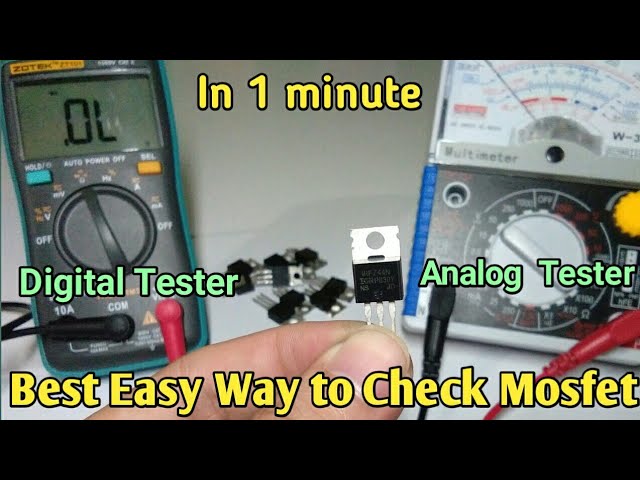Okay, let me walk you through how I usually check a MOSFET with my multimeter. Had to do this just the other day, actually, was trying to fix an old amplifier board that wasn’t putting out any sound on one channel. Suspected one of the output transistors, which happened to be MOSFETs.

Getting Started
So, first thing I did was pull the board out and locate the suspect MOSFETs. You gotta know which pins are which – Gate, Drain, and Source. Usually, you can find a datasheet online real quick if it’s not marked on the board, but these were pretty standard TO-220 packages, so pin 1 was Gate, pin 2 was Drain, and pin 3 (and the metal tab) was Source. This was an N-channel enhancement type, which is pretty common.
I grabbed my multimeter – nothing fancy, just a standard digital one – and set it to the diode test mode. You know, the one that usually beeps for continuity and shows a voltage drop.
Checking for Shorts
First up, I wanted to see if it was internally shorted, which is a common failure. I put the black probe (negative) on the Drain pin and the red probe (positive) on the Source pin. My meter showed an open circuit (usually displays “OL” or “1”). That’s good. If it beeped or showed zero, the MOSFET would be toast right away, shorted drain-to-source.
Then I reversed the probes, putting the red one on Drain and the black one on Source. Because MOSFETs have that internal body diode, I expected to see a diode reading here. I got something like 0.5V on the display, which is normal. So far, so good, no dead short.
Testing the Gate
Now, the main event – seeing if the gate actually works. This part feels a bit like magic sometimes.

- Charging the Gate: I kept the black probe on the Source pin. Then, I briefly touched the red probe to the Gate pin for just a second or two. This uses the multimeter’s voltage to charge up the gate.
- Checking if it Switched On: Immediately after touching the gate, I moved the red probe back to the Drain pin (keeping the black probe on the Source). Boom! The meter reading dropped from open circuit (“OL”) to a very low value, almost zero, and it beeped for continuity. This told me the gate charge had turned the MOSFET ‘on’, allowing current to flow between Drain and Source, just like it should. Success!
- Discharging the Gate: To make sure it could turn off again, I needed to discharge the gate. The easiest way I find is to just briefly touch the Gate pin and the Source pin together with my finger, or a screwdriver blade. You’re just shorting the gate to the source to drain away the charge.
- Checking if it Switched Off: With the gate now discharged, I went back to testing Drain-to-Source. Red probe on Drain, black probe on Source. The meter went back to showing “OL” (open circuit). Perfect. It turned off correctly.
Wrapping Up
So, this particular MOSFET passed all the checks. It wasn’t shorted, the internal diode looked okay, the gate could be charged to turn it on, and discharged to turn it off. Turned out my problem on that amp board was actually a bad solder joint nearby, not the MOSFET itself!
Just remember, this is a basic static test. It catches most common failures like shorts or opens, but it doesn’t tell you how the MOSFET performs under load or at high frequency. Still, for a quick check on the workbench, it’s usually good enough to tell if a MOSFET is definitely dead or likely okay. It’s saved me buying parts I didn’t need plenty of times.

